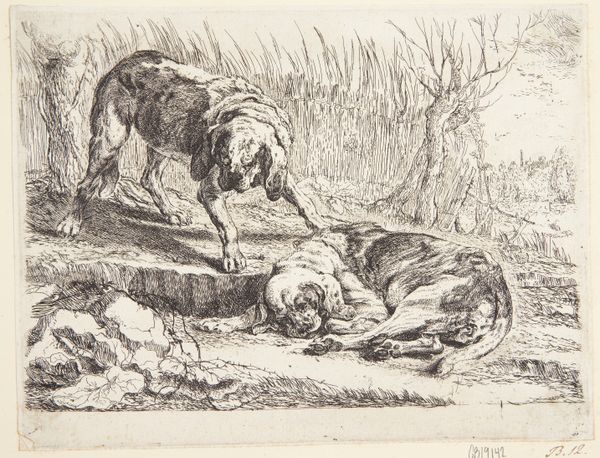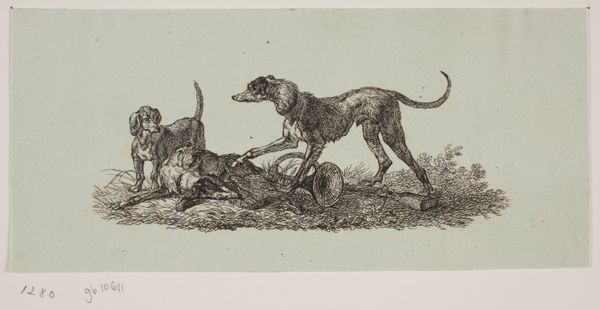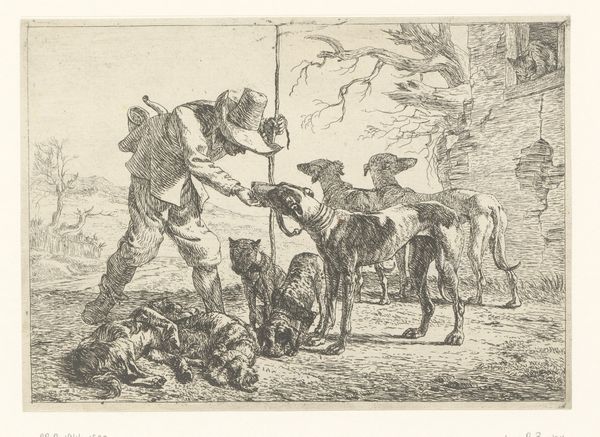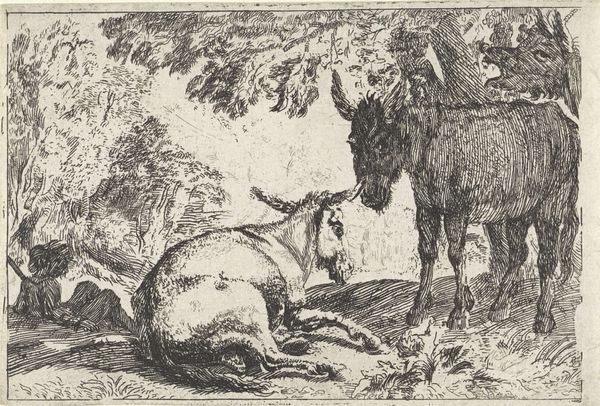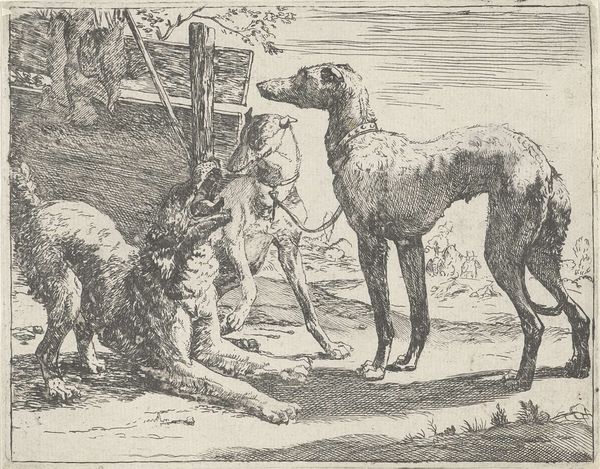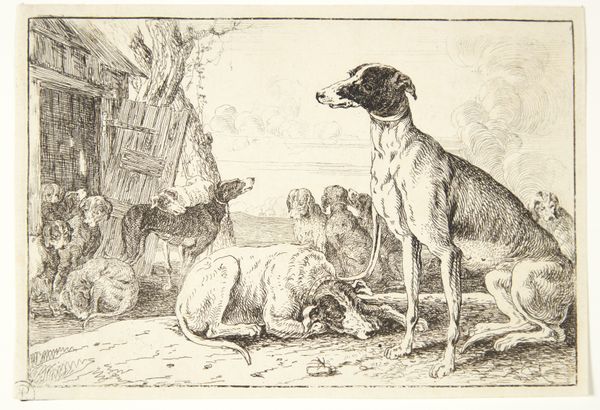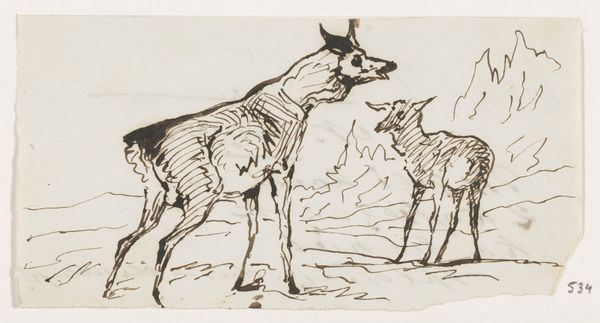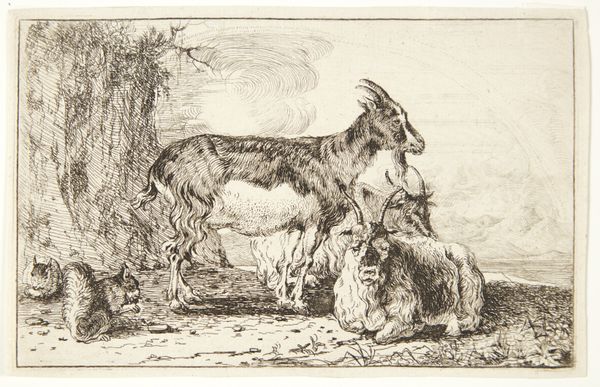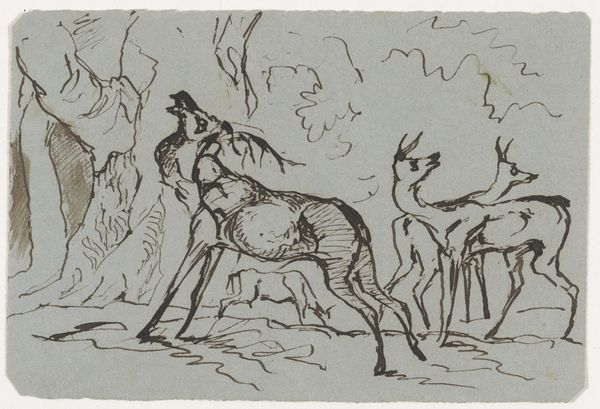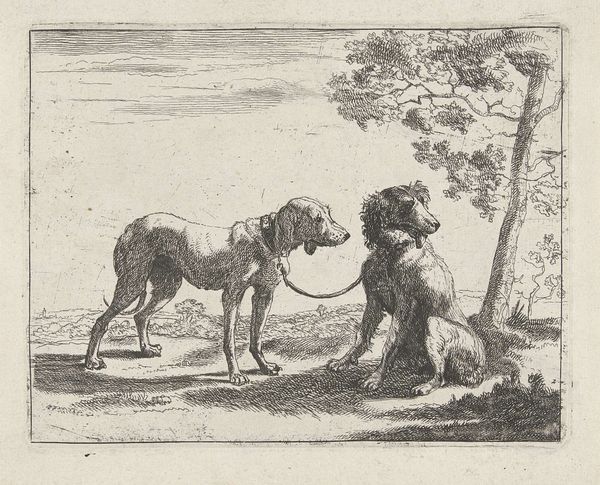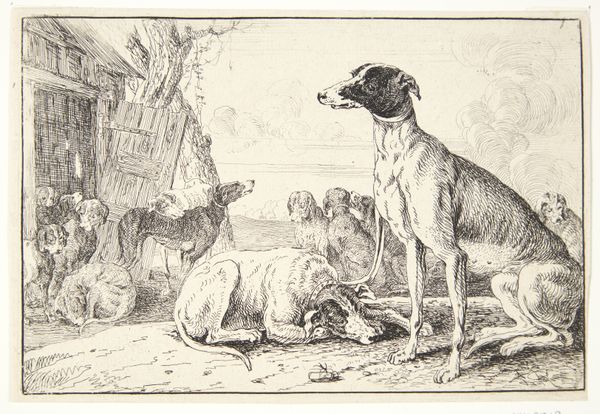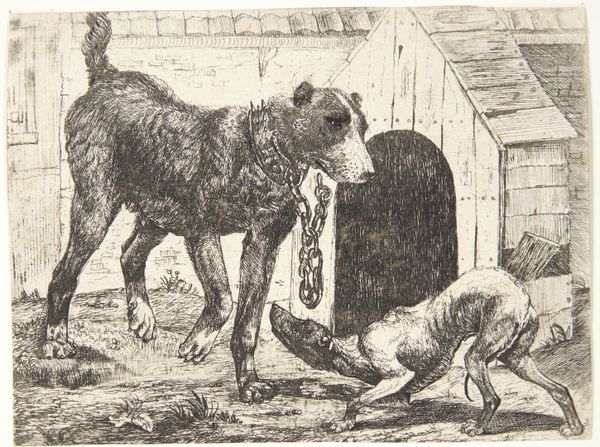
print, etching
#
baroque
#
animal
# print
#
etching
#
landscape
#
figuration
#
genre-painting
Dimensions: 170 mm (height) x 217 mm (width) (bladmaal)
Curator: I find the stoic quality of this print intriguing, its seeming simplicity concealing a more profound commentary on leisure and status in the Baroque era. Editor: Well, the first thing that strikes me is its raw energy. The dogs, though restrained, convey a real sense of pent-up power and eagerness. There’s something almost unsettling about their stillness against the potential for sudden movement. Curator: Exactly. This etching, titled "To greyhounds", was produced around 1642 by the Flemish artist Joannes Fijt. It presents, on first viewing, as a simple genre scene, almost a portrait of these two hunting dogs. However, in the context of the 17th century, greyhounds weren't merely pets; they were potent symbols. Editor: Symbols of aristocracy, I imagine. Tied to hunting rights and land ownership? Curator: Precisely. These dogs weren't simply animals but represented wealth, power, and a specific kind of landed privilege. They are visual shorthands for a complex socio-political hierarchy. Think about the formal composition and its allusions; the horizon line locates the gentry at the city limits. Editor: I also notice the line work – the fineness of the etching really emphasizes the muscularity of the animals, the tension in their posture. Even the landscape, though sparsely rendered, feels deliberate. Curator: Absolutely. The landscape serves to heighten the dogs' prominence but also suggests their dependence on this landscape and its controlled ownership. The artist is skillfully reminding the viewer of their lordly function. What appears casual is, in truth, highly constructed. Fijt, though renowned for his dynamic hunting scenes, offers a glimpse into the rigid structures of his time here. Editor: It's interesting how the apparent calmness becomes laden with historical and social weight. You almost forget, initially, that these are images infused with that culture and class struggle. The image has been burned with acid; the emotional layers are like striations. Curator: I see them as not entirely separate considerations. Our contemporary sensitivity to questions of class only strengthens its symbolism for modern eyes. Thank you for the chance to review Joannes Fijt's statement on power. Editor: And thank you for pointing out how charged even an ostensibly simple pastoral scene can be. The etching offers a good space to reconsider this imagery and how they remain in the visual archive.
Comments
No comments
Be the first to comment and join the conversation on the ultimate creative platform.
